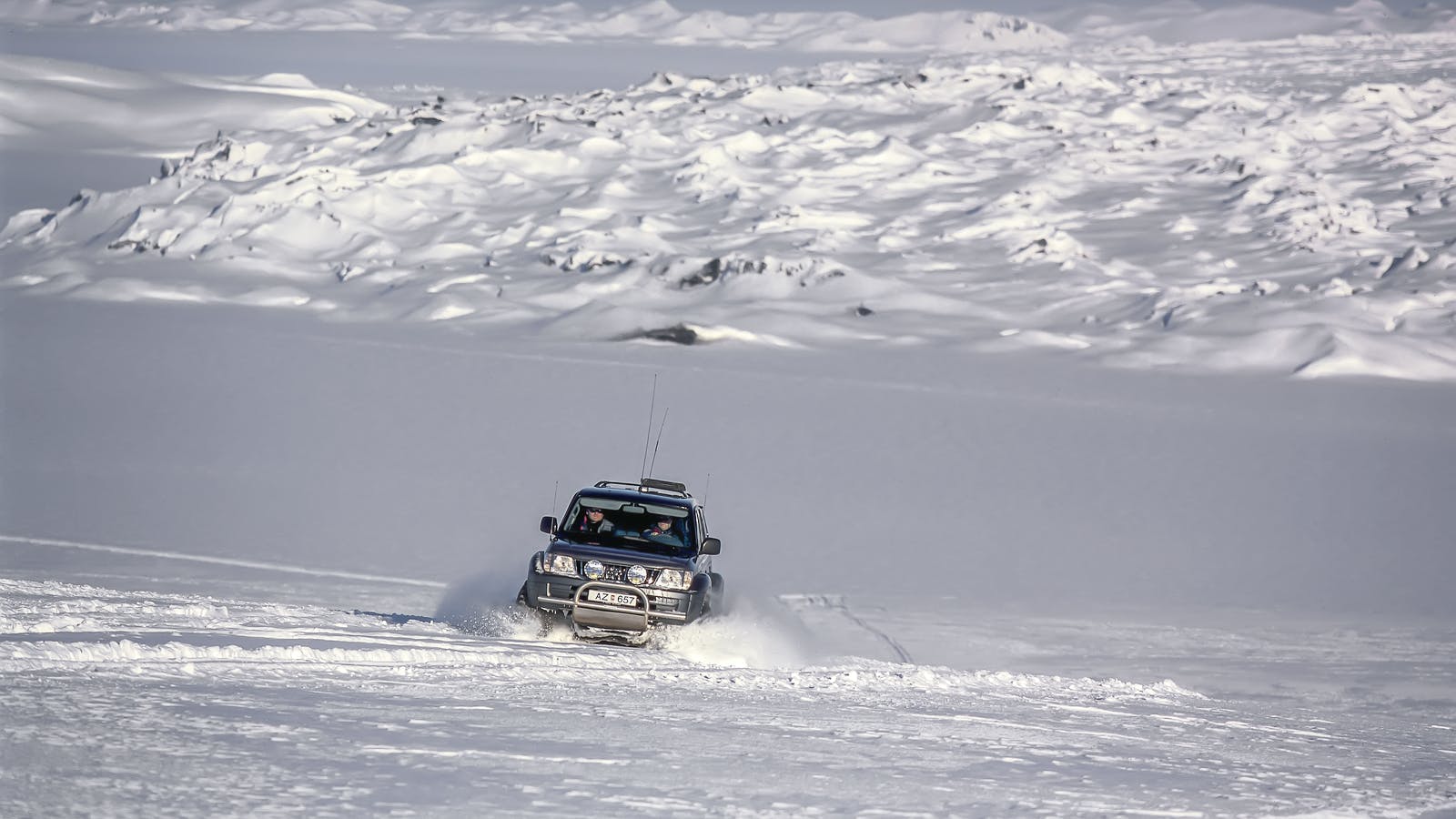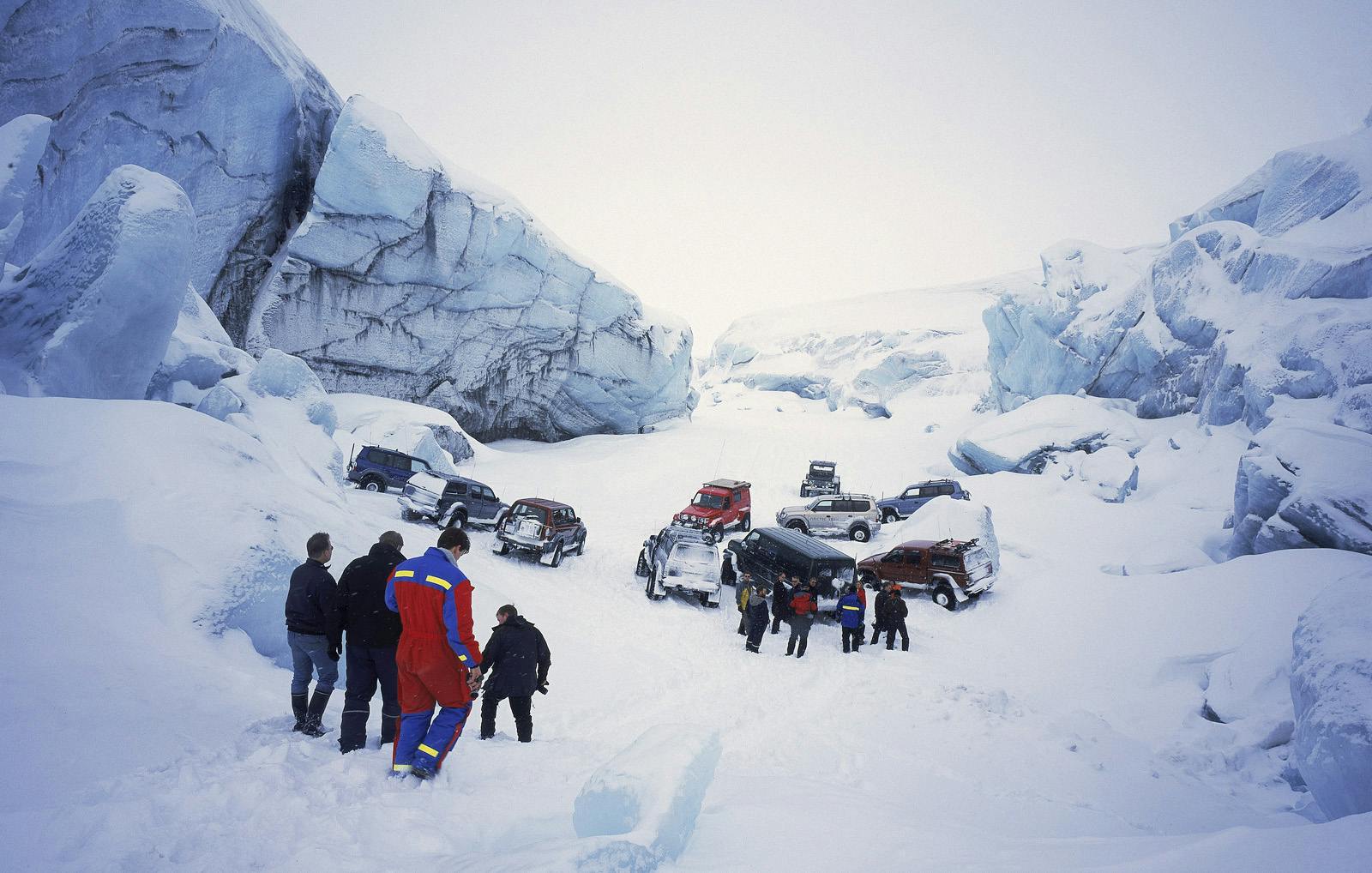
Guide to Dyngjujökull Glacier
Nestled in the heart of Iceland, Dyngjujökull stands as a formidable glacier, captivating the imagination with its icy expanse and geological significance. As part of the Vatnajökull glacier system, Dyngjujökull plays a crucial role in shaping the landscape and preserving the island's natural beauty. In this exploration, we delve into the scientific intricacies that define Dyngjujökull, examining its formation, characteristics, and the broader context of its interaction with the dynamic geological forces that define Iceland.

Formation and Location
Dyngjujökull is situated in the northeastern region of Iceland, within the Vatnajökull National Park. Vatnajökull, Europe's largest glacier, is a vast ice cap covering about 8% of the country. Dyngjujökull is one of the numerous outlet glaciers stemming from Vatnajökull, draining the ice cap and contributing to the intricate glacial network of the region. The glacier is located approximately 245 kilometres (152 miles) from the capital of Iceland, Reykjavík.
As an outlet glacier of the Vatnajökull, it is a part of the Vatnajökull National Park. The glacier is located between Bárðarbunga, Holuhraun and Kverkfjöll. The meltwater from Dyngjujökull feeds into the second largest river in Iceland, Jökulsá á Fjöllum.

The glacier owes its existence to the accumulation and compaction of snow over thousands of years. The relentless pressure exerted by the upper layers transforms the snow into dense ice. Over time, this process leads to the formation of massive glaciers, like Dyngjujökull, which moves slowly downhill under its immense weight.
Ice Dynamics
Dyngjujökull exhibits the typical characteristics of a glacier, displaying both slow, persistent movement and the complex interplay of forces that govern its behaviour. The glacier flows downslope under the influence of gravity, creating a dynamic environment that continually shapes the landscape.

The movement of Dyngjujökull is not uniform. While the glacier's surface may appear relatively static, underneath lies a dynamic world of flowing ice. This movement is facilitated by the interplay of internal deformation and sliding at the base of the glacier. The glacier's lower layers, subjected to intense pressure, deform and flow like a slow river of ice, while the base of the glacier slides over the bedrock lubricated by meltwater.
Geological Significance
Dyngjujökull is situated atop a complex geological setting, adding to its scientific significance. The glacier is positioned near the northwestern edge of the Vatnajökull glacier, adjacent to the volcanic zone that runs through Iceland. This geological context intertwines the fate of Dyngjujökull with the island's active volcanic processes, presenting both challenges and opportunities for scientific study.
The Vatnajökull region is home to numerous subglacial volcanoes, hidden beneath the ice. One such notable feature is the Bárðarbunga volcanic system, lying beneath Dyngjujökull. The interaction between the glacier and the underlying volcanic activity has profound implications for both glaciology and volcanology.

Volcanic Interaction
Beneath Dyngjujökull lies a dynamic subglacial environment where volcanic and glacial forces converge. The heat generated by the underlying volcanic activity interacts with the overlying ice, leading to the formation of ice caves and tunnels. These subglacial passages serve as conduits for meltwater, creating a complex hydrological system beneath the glacier.

In 2014, Dyngjujökull gained international attention when a seismic swarm was detected beneath the glacier, signalling potential volcanic unrest. This seismic activity was associated with the Holuhraun eruption, which occurred just north of the glacier. Although Dyngjujökull did not directly contribute to the eruption, the episode highlighted the interconnected nature of glacial and volcanic processes in Iceland.
A Real Ice Cave in Reykjavík
Ice caves, a natural marvel, form during winter within glaciers, shaped by the carving action of meltwater streams. At Perlan Museum in Reykjavík, visitors have the opportunity to witness a genuine ice cave in a safe and protected environment.
Distinguished as the world's inaugural ice cave of its kind, the Perlan ice cave spans 100 meters and is crafted from more than 350 tons of snow sourced from Icelandic mountains. It stands as a unique attraction, providing guests with an unprecedented encounter.
Unique Features of Dyngjujökull
The presence of ice caves and tunnels beneath Dyngjujökull is a fascinating aspect of the glacier's dynamic interaction with the underlying volcanic activity. These subglacial features contribute to the glacier's unique and ever-changing landscape, providing opportunities for scientific exploration and enhancing the allure of this icy expanse.

Formation of Ice Caves and Tunnels
- Volcanic Heat: The heat generated by the underlying Bárðarbunga volcanic system plays a crucial role in the formation of ice caves and tunnels. Volcanic heat, either from direct contact with magma or through geothermal processes, causes localised melting of the glacier's ice.
- Meltwater Channels: As the ice melts, it gives rise to meltwater channels that carve intricate pathways beneath the glacier. Over time, these channels may evolve into larger tunnels and caves.
Subglacial Hydrological System
- Complex Network: The subglacial environment beneath Dyngjujökull consists of a complex network of tunnels and conduits through which meltwater flows. This system is constantly changing and evolving as a result of the dynamic interplay between ice and volcanic heat.
- Hydraulic Fracturing: The pressure exerted by the flowing water can lead to hydraulic fracturing, creating additional voids and openings within the ice. These features contribute to the development of subglacial cavities.
Ice caves and tunnels present remarkable opportunities for scientific research. These subglacial features allow researchers to explore glacial hydrology, ice dynamics, and the influence of volcanic heat on glacier systems. By studying these unique environments, scientists can uncover vital information about how glaciers behave and respond to external forces, offering valuable insights into Earth’s changing climate.
Additionally, the formation and evolution of ice caves shed light on the geological processes occurring beneath the glacier. Investigating these processes helps scientists better understand the intricate relationship between glacial movements and volcanic activity, providing a clearer picture of the dynamic interplay shaping these extraordinary landscapes.

Access to Subglacial Environments
Exploring ice caves and tunnels offers a rare glimpse into the hidden subglacial world, but it comes with significant challenges. The ever-changing nature of glacial ice and the inherent risks of subglacial spaces demand meticulous planning and the use of specialized equipment to ensure safe and effective exploration.
Remote sensing technologies play a crucial role in overcoming these challenges. Tools like ground-penetrating radar and ice-penetrating radar enable scientists to map and study subglacial topography without the need for direct physical access, providing valuable insights into these otherwise inaccessible environments.

Tourism and Recreation
- Visitor Attractions: Some ice caves, particularly those accessible from the glacier's surface, have become popular attractions for tourists. Guided tours, often led by experienced glacier guides, allow visitors to explore these stunning subglacial features safely.
- Seasonal Variability: The accessibility of ice caves can vary seasonally, depending on factors such as weather conditions and the stability of the glacier. Tour operators prioritise safety and environmental conservation in managing visitor access.
Climate Change and Glacial Retreat
Dyngjujökull, like many glaciers worldwide, is not immune to the effects of climate change. Rising temperatures have led to accelerated melting and retreat of glaciers across the globe, including those in Iceland. Satellite imagery and on-the-ground measurements reveal a steady reduction in Dyngjujökull's size over the past decades.
The retreat of glaciers has far-reaching implications for ecosystems, water resources, and sea-level rise. As Dyngjujökull recedes, it releases meltwater into rivers and lakes, impacting the delicate balance of Iceland's hydrological systems. Additionally, the exposed landscapes left behind by retreating glaciers provide unique opportunities for the study of glacial geomorphology and the uncovering of ancient geological features.







